Hi everyone, Michael here to take a look at the history of transport vehicles in 40k. For more reviews, analyses and battle reports, check out the Tactics Corner.
Welcome to part 2 of my look at the evolution of the rules for vehicles in 40k (part 1 can be found here). This section will take a look at how the rules for transport vehicles has evolved from 3rd edition through to the 7th edition that is now currently on the tabletop.
Most races in the 40k universe have access to some form of transport vehicle; from the ramshackle trukks of the Orks, to the iconic Rhino of the Space Marines and the sleek and much maligned Wave Serpent of the Eldar. Transport vehicles are an important part of many armies, providing a way to protect troops while enclosed in a quick delivery system to either fire on the enemy at short range or assault your opponent’s gun-line.
These vehicles have seen many changes to their rules over the past 19 years. As the balance between the shooting phase and assault phase has evolved over the various editions, these changes frequently come about through modification of the rules for transport vehicles, sometimes leaving assault troops out in the cold with harsh rules regarding these special types of vehicles.
Third Edition (1998-2004)- Rhino Rush
In third edition, the assault phase was king! Assault troops would spill out of their transports, ploughing into the enemy lines and chaining combat after combat, thanks to sweeping advance assaults. Power weapons cut through the toughest of armour while the enemy infantry looked on in dismay, never getting to fire their shiny new lasguns at the foe.
The Basics
In third edition, passengers in a vehicle could embark or disembark within 2″ of any part of the vehicle. If the vehicle had already moved, the unit could not move any further in the movement phase and could still disembark if the vehicle had not moved over 12″. If the vehicle had not moved before disembarking, the unit could still take its normal 6″ move in the movement phase.
Troops could not embark in a vehicle if it had moved over 12″, but could embark into a vehicle on their consolidation move after assault if they could all get within 2″ of the vehicle.
When embarked in a vehicle, half of the unit could fire from it in the shooting phase. If the vehicle was open-topped, then every member of the unit could fire in the shooting phase. The unit counted as moving and could not fire if the vehicle moved over 12″.
If a transport vehicle was destroyed, each passenger would take a wound on a 4+, with armour saves being allowed. When firing Ordnance weapons, a roll of a 6 on the Ordnance penetration table meant that the vehicle was Annihilated; the entire unit of passengers was lost without any saving throws possible.
One of the biggest bonuses of transport vehicles in third edition was that units that had disembarked could assault on the same turn.
Full Speed Ahead!
“Rhino Rush” was a term coined in 3rd edition to describe a very popular strategy amongst assault-based armies. The phrase was used to represent the tactic of putting an assault unit in a transport vehicle and moving them as fast as possible towards the enemy to assault. Generally, multiple identical units were used to cause as much damage as possible.
In third edition, vehicles could move 12″ and still allow passengers to disembark 2″. They were then allowed an additional 6″ assault move, giving the units a threat range of 20″. Given that many scenarios in this edition required players to set up only 18″ apart from one another, turn 1 charges were common place and a highly effective “alpha-strike” option for many armies in the game.
As can be guessed from the name of the tactic, this was very popular amongst power armoured armies, who had access to very cheap transport vehicles and could put out a decent number of attacks in combat. The fact that marines got to fire with their bolters (though only with a single shot) before launching an assault made this tactic even more brutal.
I remember Space Wolves being the kings of this tactics for the loyalist marines. Three or more Rhinos loaded with Blood Claws or Grey Hunters provided a very cheap source of manpower, as well as being able to include Wolf Guard members in the unit armed with power weapons or power fists. These units would surge towards the enemy, getting a turn one charge and generally obliterating anything they came into contact with. The fact that units could use their sweeping advance move to charge into combat in third edition, meant that units could chain combats together, and if you were very unlucky, most of your army could be eliminated without firing a single shot.
The Dark Angels were my only army in 3rd edition and our local GW had a very skilled Space Wolves player. Thanks to the enmity between the two chapters, a special rule allowed units from both armies to hit one another on a 3+ in combat. Let’s just say that I was on the receiving end of a fair amount of hurt from the Space Wolves in 3rd edition.
The servants of the Emperor did not have all the fun to themselves, as this was an equally viable tactic for the followers of Chaos. Chaos Space Marines could be armed with bolters, bolt pistols and combat weapons, allowing them to rapid fire into the enemy, then assault and gain an extra attack each, resulting in a lot of damage in combat.
My friend and regular opponent at the time used to run a unit of Khorne Bezerkers in a Rhino that made my Dark Angels break into a cold sweat. These devotees of the Blood God came armed with two weapons as standard and boasted an additional attack each to give them 4 on the charge.
This tactic was not limited to simply the marines. Howling Banshees in a Falcon and Ork Boyz in a trukk enjoyed similar success with this type of tactic.
Third edition really did have a strong bias towards assault armies with so many rules working well together to make firepower heavy armies a real challenge to play. Although they did not have access to transport vehicles, Tyranids were one of the toughest armies in my local gaming scene. Genestealers were as terrifying on the battlefield as their history suggested, able to put out an obscene number of armour ignoring attacks and with infiltrating Lictors able to charge in turn 1, I cannot recall a single time that I beat our local Nid player in the six years of 3rd edition. I’m sure some of the older readers will recall when Tyranids were one of the toughest armies around and would hope for a return to form soon.
Adding Complexity
The release of Codex: Armageddon in 2000 marked the next stage in the evolution of the rules for transport vehicles. This supplement chronicled some of the history of the third war for Armageddon where Ghazghkull Thraka led his Orks against the Imperial forces led by Commissar Yarrick. This supplement contained the rules for fielding an Ork Kult of Speed, the Salamanders and Black Templar space marine chapters, and the Armageddon Steel Legion for the Imperial Guard.
The Steel Legion primarily consisted of a mechanised force, with most of the infantry squads being carried in to battle by the Chimera APC. With the increased number of Chimeras likely to be fielded in a Steel Legion army, additional optional rules were included to allow the Chimera to perform on the tabletop how the model suggested that it would.
This was the first time that the concepts of Fire Points and Access Points were introduced into the 40k rules. These rules served to limit where the guardsmen could embark/disembark from the Chimera (only from the rear hatch) and how many models could fire from the roof hatch of the tank. The trade-off for these optional new rules were that the Lasgun arrays on the side of the vehicle were given new rules to allow them to be used in the game and to allow the Chimera to now become an amphibious vehicle as its background suggested. Under the new fire point rules, two models could fire from the top hatch of the tank in addition to the 6 guardsmen that could fire from the lasgun arrays. So by limiting the access points for the vehicle, the Steel Legion player could essentially gain three additional firing models (only 5 of a 10-man squad could fire from the vehicle previously), as well as gaining the situational-dependent amphibious rules.
This trend of increasing complexity continued, when in January 2001, White Dwarf published a Chapter Approved expansion to the rules for transport vehicles. This article introduced the concept of Fire Points and Access Points to those that had not purchased the Armageddon Codex, as well as introducing new rules for Space Marine Vehicles, Sisters of Battle Vehicles and Eldar Vehicles.
Many of these rules are still seen in the game today or have their beginnings in this article; The (often forgotten) immobilisation repair roll on the Rhino, Power of the Machine Spirit and Assault ramp rules for the Land Raider, units being destroyed if they cannot disembark.
Also added to this article was the rule that if a unit fired from a transport vehicle, it then became open-topped until the end of the next enemy turn. Except if you wear power armour. Marines don’t really care if you fire your lasgun at them as they surf the roof of the Rhino to fire their plasma gun.
The release of Codex: Armageddon and the expanded White Dwarf rules were a glimpse at where the games developers would be taking the rules for vehicles in the next edition of the game.
Fourth Edition (2004-2008)- In, Out, In, Out, Shaken all About
As I mentioned in the previous article on the evolution of tanks, the rules for vehicles saw some big changes in fourth edition and the rules for transport vehicles were no different.
“Gamers from around the world have given us tons and tons of feedback on what was good and what could be improved in the game. Some of the strongest themes were the dominance of assault, especially from transport vehicles“- Pete Haines, 4th Edition Preview, White Dwarf 296.
As was mentioned above, the dominance of assault armies from transport vehicles was thought to be a problem from 3rd edition, and oh boy, did GW respond with 4th edition.
Changing Access
The change to the rules for transport vehicles that were suggested in 2001 were solidified as core rules by the introduction of Fire Points and Access Points to the main rules for vehicles. These served to limit where a unit could embark/disembark from a vehicle and how many of the unit inside could fire from the vehicle. These changes should be familiar to anyone still currently playing 40k, as the rules have continued right through to 7th edition. If a unit could not disembark from their vehicle using an access point when the vehicle was destroyed (for example, if an enemy unit was within 1″), then the unit was destroyed as well.
Interestingly, if a unit without a 2+ or 3+ armour save fired from a vehicle, the vehicle counted as open-topped for the next turn to represent the chance of hitting an exposed passenger. This made shooting from a vehicle a bit more hazardous for non-power armour equipped troops. I honestly don’t remember this rule in the book or ever using it against my opponent during my games of 4th edition. As I ran my Dark Angels through most of this edition, it didn’t really affect me, but I don’t recall it affecting anyone else I played during this time. Maybe this was one of those rules that are just forgotten about over time.
The concept of Dedicated Transports was also introduced in this edition. The idea was that if a transport vehicle was purchased for a unit, then only that unit could embark upon it. This was a further change to limit the utility of transport vehicles from third edition, where a transport vehicle purchased for one unit could be used by another unit in your army. This further restricted some of the combinations that could be used in combat armies in the previous version of the rules.
One of the biggest changes to the rules for transport vehicles was in the assault phase:
“To ensure defenders had a chance to react to the transports disembarking nearby we’ve ruled that passengers can’t assault in the same turn they disembark from a moving vehicle- which is undoubtedly the most controversial change we’ve made“- Pete Haines, Designer’s Notes, White Dwarf 297.
Units could now no longer assault from a vehicle that had moved, unless it was open-topped or an assault vehicle. Units could still assault from a vehicle if it had not moved that turn.
The new rules helped to distinguish open-topped vehicles as a useful addition to assault armies. In third edition, there was little benefit in having an open-topped vehicle for most armies as any unit could assault out of any vehicle. The most common users of open-topped passenger vehicles to my mind were (are still are) the Orks and Dark Eldar. The benefit of all the passengers shooting out of the vehicle was little consolation to the Orks, and of some benefit to the Eldar, but did not seem to make up for the disadvantage of your opponent getting a bonus to the damage table. In fourth edition, these vehicles were now more useful and worth the drawbacks, allowing assault on the same turn that the vehicle moved. However, further changes to the rules for transport vehicles were soon to decrease these apparent benefits.
A Penetrating Blow
Changes to the vehicle damage table also had an influence on the passengers of transport vehicles. A vehicle taking Crew Shaken or Crew Stunned damage prevented the passenger from shooting. If the vehicle exploded, each passenger took a wound on a 4+ (though armour saves were allowed).
Another huge change to the rules for transport vehicles was that passengers had to immediately disembark if the vehicle took a penetrating hit. In addition, the passengers took damage from disembarking based on how fast the vehicle had moved in the previous turn. This ranged from taking a pinning test, to the passengers taking automatic damage and being automatically pinned (even if they were normally immune to pinning).
Without a doubt, transport vehicles were incredibly powerful in third edition, but the new rules in fourth edition that sought to downgrade their power seemed to go too far in the opposite direction, making transport vehicles veritable deathtraps in the new rules.
I think that disallowing a charge from a moving vehicle was a good change to the rules. It gave shooting armies a chance to deal with the enemy without getting charged on the first turn and eliminated. You could still assault from a vehicle, but had to wait to turn 2 at least and spend a turn in front of the enemy firepower, but your assault unit still gained the bonus of the protection of the transport.
However, some of the rules proved a very harsh penalty for transport vehicles. Being forced to disembark on any penetrating hit (not just for destroying the vehicle) and taking damage if the vehicle was moving fast was a really tough blow for assault armies as well as making little sense in the context of the rules. Passengers in a vehicle that was taking fire from the enemy’s most penetrating weapons thought that the best thing to do was to jump out a full speed and trust their armour to protect them where the hull of the tank they were travelling in could not.
This change in rules was particularly harsh for those armies that relied on lightly armoured assault troops such as Orks and Dark Eldar. These armies that would frequently rely on light vehicles such as the Raider or Trukk to get them into combat were now in a position where they would have to risk moving at full speed towards the enemy knowing that a single penetrating hit on their weakly armoured vehicles would most likely result in the loss of half the squad riding in it.
I think that the effort to combat the power of Rhino Rush resulted in a swing in the opposite direction from 3rd edition to 4th edition, where transport vehicles were now a rather poor method of getting troops into assault.
Fifth Edition (2008-2012)- Redressing the Balance
The release of the 5th edition of the 40k rules helped to temper some of the penalties for transport vehicles that the last edition had brought in, while adding a few more restrictions to their use.
Sharing is Fun!
The vehicle rules now stipulated that only one unit and any associated characters could be carried in a transport vehicle. I’m not sure why this had to be pointed out in the rules, were many people trying to squeeze multiple units into transport vehicles in 4th edition? I was certainly unaware of anyone trying this and never did it myself.
Another interesting change was that dedicated transports were no longer limited to carrying only the squad that had purchased them.
“Dedicated transports can now carry any squad, I’ve always found the rule confining them to the parent squad restrictive“- Alessio Cavatore, Designer’s Notes, White Dwarf 343.
This was a nice change, allowing you to purchase a transport for one squad and use it for another squad that perhaps did not have access to a transport option. This further helped dedicated assault units achieve a modicum of protection from a vehicle to get them in to combat unscathed.
There were other modifications to how effective a unit was depending on how far the vehicle had moved. Passengers in a transport could now no longer fire if the vehicle moved at cruising speed (6” for a normal tank/vehicle). Passengers could still not assault from a moving vehicle (unless it was open-topped), but could assault from a vehicle if it had not moved that turn. This allowed units to gain the protection of the vehicle before assaulting the enemy, but still allowed their opponent a chance to destroy the vehicle and unit before the assault was launched. Open-topped transports continued to be useful variants, allowing the unit to assault from the vehicle even if it had already moved, increasing the threat range of such units.
Decreasing Damage
More of the harsh penalties for transport vehicles taking fire were reduced in 5th edition.
Passengers no longer had to disembark from the vehicle if it suffered a penetrating hit, to the delight of many players. A vehicle that had been Shaken or Stunned prevented the passenger from shooting, and if a transport vehicle was destroyed, the passengers only took a strength 3 hit from the wreck as opposed to a strength 4 hit previously.
New rules for emergency disembarkation were introduced. Units in a transport were no longer automatically destroyed if all access points were blocked. Instead they could deploy anywhere within 2″ of the vehicle, but could not do anything else for the rest of the turn as a penalty. This prevented expensive units from being instantly destroyed in return for some penalisation.
In order to help armies combat transport vehicles, it was ruled that if a transport vehicle was destroyed, the unit inside could be assaulted by the unit that destroyed the vehicle. This allowed you to destroy an enemy transport and then attempt to deal with the passengers, rather than simply destroying the vehicle and being forced to take the charge next turn as was the case in previous editions. This led to more tactical decisions in the game over whether to fire heavy weapons to take out a vehicle, preventing an assault from your unit, or being able to go in with close range anti-tank weaponry such as the Meltagun, then assaulting the occupants as they emerged from the wreck.
Fifth edition made some nice improvements to the rules for transport vehicles, decreasing some of the harsher penalties that 4th edition introduced, while still making them a tougher prospect to use than the point-click-release system that had occurred in third edition.
Sixth Edition (2012-2014)- Insufficient Charge Remaining
This new version of the 40k rules only saw a few changes to the rules for transport vehicles, mostly due to the incorporation of snap shots and hull points into the main vehicle rules. There was, however, one major change that was introduced that had a significant effect on the use of transport vehicles for assault units.
Know no Fear
One of the first rules you came across in the transport vehicle section was that all units in a transport vehicle were Fearless. I’m not sure which situations could occur to force a unit in a vehicle to take morale checks, but it was a nice bonus for vehicles to confer to passengers.
The introduction of snap shots for firing weapons granted some nice bonuses to units embarked within vehicles. Passengers could still fire if the vehicle moved at combat speed (6″ for a normal vehicle), but were now also allowed to snap fire if the vehicle moved at cruising speed. A nice bonus for some vehicles based on the unit inside and their rate of fire, particularly open-topped vehicles where the whole unit could fire. This rule was sometimes utilised by Ork players, who would load up a battlewagon with a unit of Lootas. The Battlewagon would provide the Lootas with some much needed protection, while still allowing the whole unit to fire. If the vehicle moved, the Orks would only be snap firing, but rolling a 6 to hit vs a 5 to hit normally is not too much of a problem for most Ork players, especially if the volume of fire was high enough. This rule also worked well for Rokkit-armed tankbustas in trukks.
The major changes to the rules in 6th edition were to do with units disembarking from vehicles. Units could now no longer disembark if a vehicle moved more than 6″. In all previous editions, units could generally disembark if a vehicle had moved up to 12″, but this distance was now cut in half to further restrict the utility of transport vehicles. In addition, units no longer gained the extra 2″ movement from deployment. Now, all units disembarking from a vehicle could make their “normal” 6″ movement when getting out of a transport.
Perhaps the biggest change to the rules for moving from transport vehicles was that units that disembarked from a vehicle could no longer assault that turn, whether the vehicle had moved or not. This was a big change to the rules, as previously a unit could launch an assault from a vehicle if it has not moved that turn. Now, a unit must disembark in the previous turn if it wished to launch an assault, leaving it more vulnerable to the enemy firepower.
Units in open-topped vehicles were still able to assault the turn that they disembarked from a vehicle, though not if it moved over 6″ that turn. This still set up open-topped vehicles as the best transport type for assault units, with such units only losing a small amount of movement (the 2″ disembarking move. Although transports could move 12″ and still deploy previously, the unit could not move, so the movement distance in 6th edition was comparable to that in 5th where units could disembark and move).
Damage Modification
A few changes to the vehicle damage table effects on passengers were also introduced. Shaking a vehicle now caused passengers to fire snap shots, rather than being unable to shoot. Wrecking or exploding a transport vehicle caused the passengers to take a pinning test, with the latter causing a strength 4 hit for each passenger when it blows up.
Passengers in a transport vehicle now only took damage if the vehicle exploded, simply wrecking a vehicle no longer caused automatic damage to the passengers. This was useful for many armies as the change to the 6th edition vehicle rules meant that is was more difficult to cause a vehicle to explode rather than just wrecking it by removing all its hull points.
In addition, the change that glancing hits only removed hull points rather than the chance that they could stop a vehicle moving through stunning it or immobilising it was a bonus for assault units, as there were fewer ways for their transports to be stopped in the enemy turn.
Mighty Marines
The change to sixth edition also added some more utility for Space Marine armies when using transport vehicles through modification to the Combat Squad rules. This rule allowed full 10-man marine squad (as well as selected other units) to be deployed as 2 separate entities on the battlefield, giving the marine player access to more units on the table. Previously, if the squad had purchased a transport vehicle, then only one of the combat squads could be mounted in said vehicle.
The 6th edition codex brought about a change to this rule, allowing both combat squads to embark in a transport vehicle, then act as separate units once they had disembarked. This added some tactical flexibility to the marine army as they didn’t have to double up on transport vehicles for a single unit. The first time I saw this tactic used was against Darksun’s Space Marine army in my Blog Wars 9 practice game. He was able to combat squad his Sternguard veterans into two squads (one with combi-meltas and the other with bolters) and deploy via a single drop pod. When the pod arrived, the meltagun combat squad were able to deal with my Centurions, while the second squad were able to target some bikers. Without this ability to share the same drop pod, either one unit would have had to deploy on the board in his deployment zone or could potentially have their bolter shots wasted firing at a target they may not be able to damage (such as an enemy tank). This was a very effective tactic that made me rethink how I used my own combat squads in their transports.
Seventh Edition (2014 onwards)- Fine Tuning
The latest set of 40k rules seemed more of an update and fine tuning of 6th edition rules, rather than a brand new edition that players had been used to.
This carried on through to the transport vehicle rules, which are very similar to the rules seen in the previous edition with a few updates. The biggest changes to transport vehicles came not from the rulebook, but from the different codices themselves.
Psychic Damage
One update to the rules for transport vehicles was that psykers were limited to using only witchfire powers if embarked in a transport vehicle. This prevented powerful psykers from using a multitude of different powers from the relative safety of a vehicle.
There were also minor changes to the effects on passengers from vehicle damage on the table. All results on the table forced a unit embarked in a transport vehicle to take a pinning test. Previous results either forced the unit to automatically snap fire or not fire at all, however, no results other than wrecking or destroying the vehicle could limit the movement of the passenger unit through a failed pinning test.
The rules for Template weapons also got a boost against transport vehicles with the addition of “No Escape”. This rule granted additional hits on the occupants of a vehicle if the template hit an open-topped vehicle.
I disliked this change to the rule. I can see the logic from a narrative point of view, but feel like it penalises assault armies with open-topped vehicles, as these armies tend to have low armoured troops that suffer from the inclusion of the rule.
Codex Changes
One of the biggest changes to the use of transport vehicles in the game in 7th edition has come from the updated codices themselves.
The latest releases have seen a trend of including transport vehicles as stand-alone choices in the codex (most commonly as fast attack choices), giving much more utility to these vehicles. I think that by far, the Space Marine drop pod has seen the biggest boost from being a separate choice. Grav cannon-armed Centurions have received a bonus from being able to take a drop pod as a transport vehicle, alleviating their sometimes limited range with being able to deploy closer to the enemy. This is a tactic that I have used several times with my extremely suicidal Centurions (it is rare that they ever get to finish a game on the board!).
It was not only Centurions that gained a bonus from being able to take a drop pod. Thanks to the Battle Brothers rule, units of Astra Militarum Veteran units loaded up with special weapons utilising a borrowed drop pod made for a powerful alpha strike. Forces of the Mechanicus also relied heavily on “borrowed” Drop Pods to create powerful combinations. Other armies also saw bonuses to the change in taking transport vehicles and the allies matrix, such as Eldar D-scythe Wraithguard being deployed in a deep striking Dark Eldar Raider.
(In)Frequently Answered Questions
In 2016, the Games Workshop draft FAQs featured several rulings that had big effects for transport vehicles in competitive lists.
First up, units where no longer allowed to begin the game embarked in transport vehicles belonging to another faction. This put an end to many powerful ally combinations that were observed in strong Tournament Lists.
Next, the use of aura-type abilities from units embarked in transport vehicles was stopped. One particularly popular combination was embarking a Cullexus Assassin in a borrowed Rhino. Previously, the Ryno gave the assassin the mobility required in order to effectively utilise his short-ranged psyker-denial ability. The draft FAQ ruling put an end to this tactic.
Perhaps the most controversial ruling was the effect that Jinking no had on passengers in Bart in a transport vehicle. Under the new ruling, passengers would need to snap fire if a vehicle had jinked. This led many Dark Eldar players to rail against the ruling, decrying their army was now useless. A familiar position for many Dark Eldar players in recent years, but at least one that other players could agree with this time.
When the draft rulings were ratified with an official FAQ, the first two answers remained the same. However, perhaps due to player outcry, the ruling on passengers being forced to snap fire from a jinking vehicle was reversed. Dark Eldar players around the globe rejoiced!
Going Forward
The rules for transport vehicles have seen a lot of changes over the years. Third edition saw big changes to the 40k rules and presumably also the rules for transport vehicles (I didn’t play 2nd edition, so don’t really know what the rules were like). What was unusual was that 4th edition saw equally drastic changes to the rules for transport vehicles from 3rd edition.
Fifth edition saw further changes to the rules to modify the harsher penalties of 4th, whereas 6th and 7th edition saw the biggest change to assault armies in that units were no longer allowed to assault from non-open-topped vehicles, a serious penalty for many armies.
Bringing Back Assault
I think that many players would agree that the balance between the assault and shooting phase has been skewed towards shooting for a few editions now. I think some changes to the rules for assault vehicles would help to redress the balance between the two.
I would like to see assaulting from non-moving vehicles re-introduced. Perhaps to diminish the effect, vehicle passengers would not be allowed to assault if the transport was destroyed in the previous turn. This would force your opponent to deal with the vehicle (either in combat or assault) to prevent an assault from your troops in the next turn. I think that the re-introduction of overwatch fire that has been seen would provide a small balance for being able to assault from a vehicle if it had not moved.
I think that removing the “No Escape” rule from the template rules would give assault armies such as Orks a better chance in the assault phase, not losing most of the squad to a flamer while in the vehicle.
Non open-topped transport vehicles are an interesting beast. I don’t often use them myself thanks to some of the issues I have highlighted in this article, but can see their uses on the battlefield. What about the rest of you out there? Is third edition still the king for transport vehicles, or do you like the rules as they sit now? What hopes do you have for transport vehicles in the future?
And as always, Frontline Gaming sells Games Workshop product at up to 25% off of retail, every day!
Frontline Gaming will buy your used models for cash or store credit!


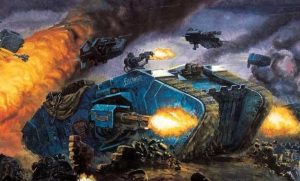
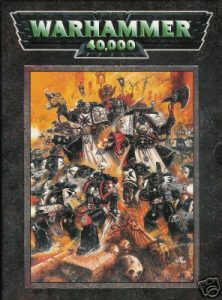
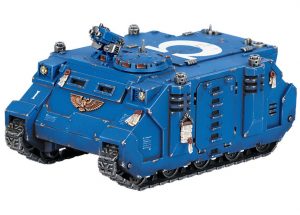
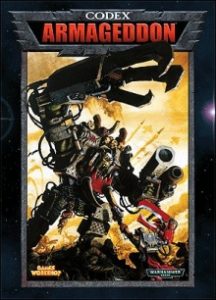
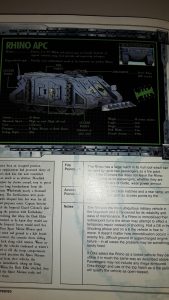
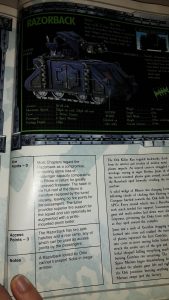


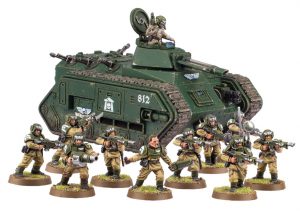
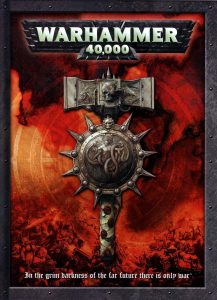
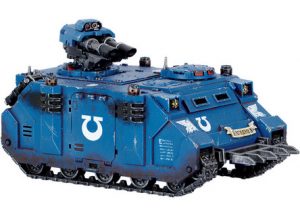

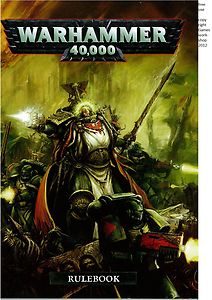
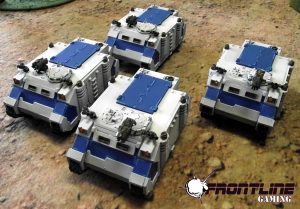
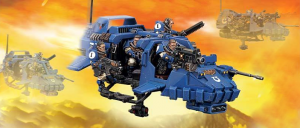
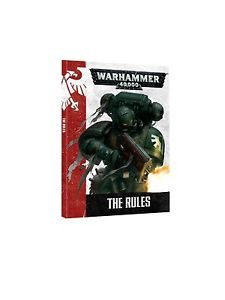
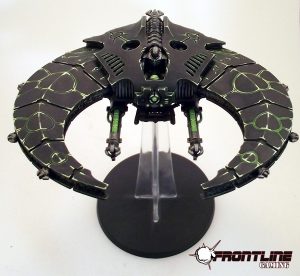

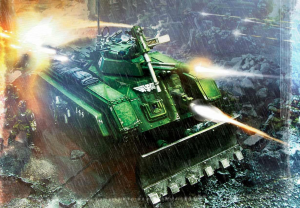

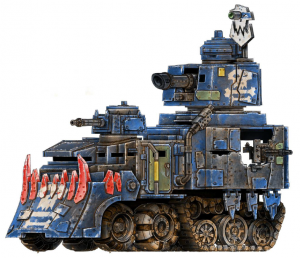

One thing you didn’t mention for 3rd/4th edition that was very relevant was the Skimmers Moving Fast rule- skimmers that moved quickly enough were considered to be “hull down” (which was essentially the old version of being in cover), which downgraded all hits against them to glancing. While this didn’t guarantee survival, as the glancing table still had Weapon Destroyed, Immobilized, and Wrecked results on it, in combination with the Eldar Holofields upgrade for the Falcon (roll twice and take the lower result on the table) it could make a vehicle all but impossible to kill and enabled the famous “clown car” strategy that delivered one or more packs of Harlequins to near-guaranteed assaults.
Previous to 5th Edition, there also was no bonuses to the roll on the vehicle damage table for weapons with low AP values- a penetrating hit from an AP6 Scatter Laser and an AP1 Meltagun were identical for all game purposes.
Some of this was covered in the previous article, this one just looked at some of the aspects of transport vehicles. I tend to look at general trends, rather than every single rule for all vehicles, as this would make the post much longer!
Fair enough. The Skimmers Moving Fast thing was very relevant to the gameplay trends that you discuss, though- Eldar vehicles made up some of the top lists of both 3rd and 4th edition at many points, being as prevalent or more than the Rhino Rush at times.
Great article, Michael! Was like a trip down memory lane.
Glad you enjoyed it!
The addition of the idea of dedicated transports has had a large effect on game play as well. Fifth edition was basically suburban hell with battles of parking lots. Sixth edition saw wave serpent and night scythe spam which increased the firepower dramatically. One of the most common lists on 7th edition is battle company where the rhinos are doing almost as much work as their contents.
I think a return to only troops scoring outside of transports would be a nice change for 8th edition.
Stopping vehicles having access to Objective Secured would potentially solve that issue. It would force units to disembark to claim the objective and stop us Marine players from camping Drop Pods on the objectives (or at least make it less effective).
Having read some first-hand accounts of combat from inside APCs, the 4th Ed requirement that the Passengers Disembark on a Penetrating Hit actually makes a lot of sense. Getting shot at isn’t actually as scary as getting trapped in a burning vehicle. US Marines in Vietnam used to sometimes build ramparts from sandbags and such, and just ride on top instead of in their APCs, because it was safer when there was Anti-tank weaponry around.
The bit about Units in Vehicles being Fearless came up because of a couple of things. With the 5th Ed Chimera allowing 5 Models to fire any Weapons they wanted, it was reasonably common that IG Command Squads loaded up with Plasma would end up killing enough through Overheats that they would need a Morale test. Also, at one point, when a Tau Ethereal died, all Tau Units had to take a Morale Test, including those in Vehicles.
6th Ed saw another big hit to the usefulness of Transports as well, especially expensive ones like Land Raiders: The introduction of Grav Weapons, and their ability to fairly reliably Immobilize anything, made relying on a Transport to get you anywhere a very risky move indeed.
Going back, 2nd Ed had a few amusing features to its Transport Rules. For instance, Rhinos could carry not only Terminators, but even Dreadnoughts. Perhaps most notably, it was possible to Disembark regardless of how fast the Transport had moved (and in 2nd Ed, this could easily be 20″+), but if it had moved more than a certain distance, the Disembarking Unit would start taking hits that increased in Strength depending on how much more than the safe max the Transport had moved. This was particularly relevant in the case of the Ork Battlewagon, which literally had a Transport Capacity of “as many Models as you can physically fit on top of the Battlewagon Model”. The downside was that if any of them fell off, they were ruled to have actually fallen off, and would take hits based on the Wagon’s speed. In extreme cases, this could result in Unit Coherency being broken to a ludicrous degree.
Grav has certainly been one of the big downfalls of vehicles since its introduction. I think that losing the instant immobilisation would be good, while still giving Marines a tool to deal with certain foes.
You can always trust Orks to bring the craziness to 40k!